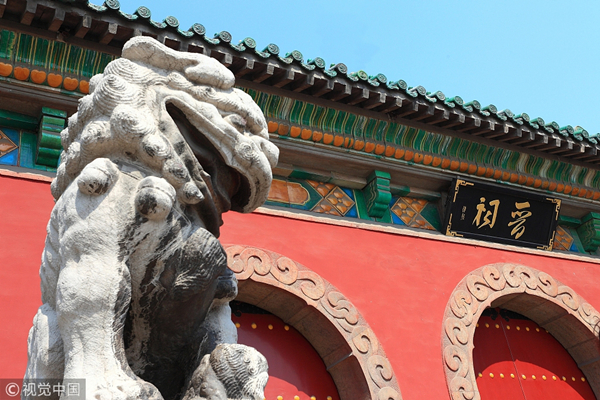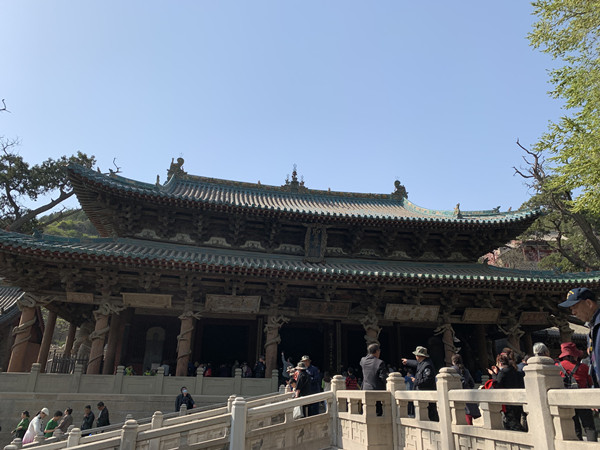
Jinci Temple in Taiyuan, Shanxi province [Photo/VCG]
Just 25 kilometers from downtown Taiyuan, Jinci Temple is a historic cultural site offering fine examples of ancient Chinese architecture, sculpture, frescoes and inscriptions.
The temple features a royal garden with copious pagoda trees and a 3,000-year-old cypress, as well as palaces, moated pavilions and bridges that branch off each other.
First constructed during the Northern Wei Dynasty (368-534), the temple stands in memory of prince Ji Yu of the Western Zhou Dynasty (c. 11th century-771 BC) on the site of his kingdom's capital, a monument to his commitment to improve the lives of his people.
Modified and expanded over subsequent centuries, the resulting temple is a diverse collection of more than 100 sculptures, bridges, terraces and buildings.
Most of the temple's dozens of buildings were built after the Tang Dynasty (618-907), primarily using wood, tiles and stone. Many buildings have been well preserved and retain a natural look with wooden surfaces weathered over many hundreds of years.

Yi Jiang Hall built in the Song Dynasty (960-1279) [Photo by Wang Xin for chinadaily.com.cn]
The most famous building at Jinci Temple is the five-story Yi Jiang Hall, built in the Song Dynasty (960-1279). It is a grand structure decorated with yellow and green glazed edgework and carved wooden dragons coiled around its eight supporting pillars of its convex double-eave roof.
Inside Jinci Temple are painted sculptures crafted in the Northern Song Dynasty (960-1127 AD), some of the temple's strongest historic offerings. Statues of Yi Jiang, wife of the founder of the Western Zhou Dynasty (c. 11th century-771 BC), and 42 of her maids provide a vivid depiction of myriad Song Dynasty characteristics.
Jinci Temple was listed as a national 4A tourist attraction in 2001.
Address: Jinci town, Jinyuan district, Taiyuan city, Shanxi province
Related reading
